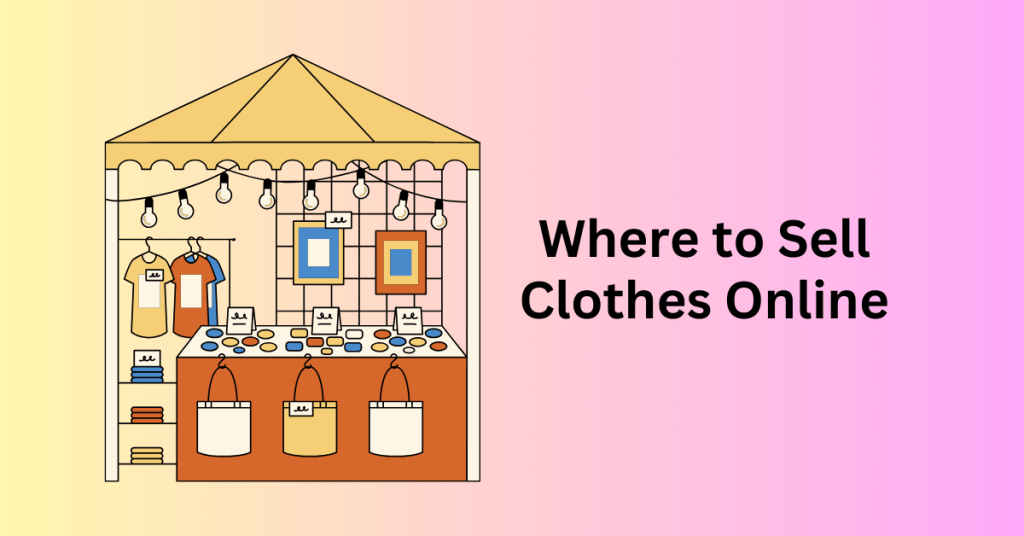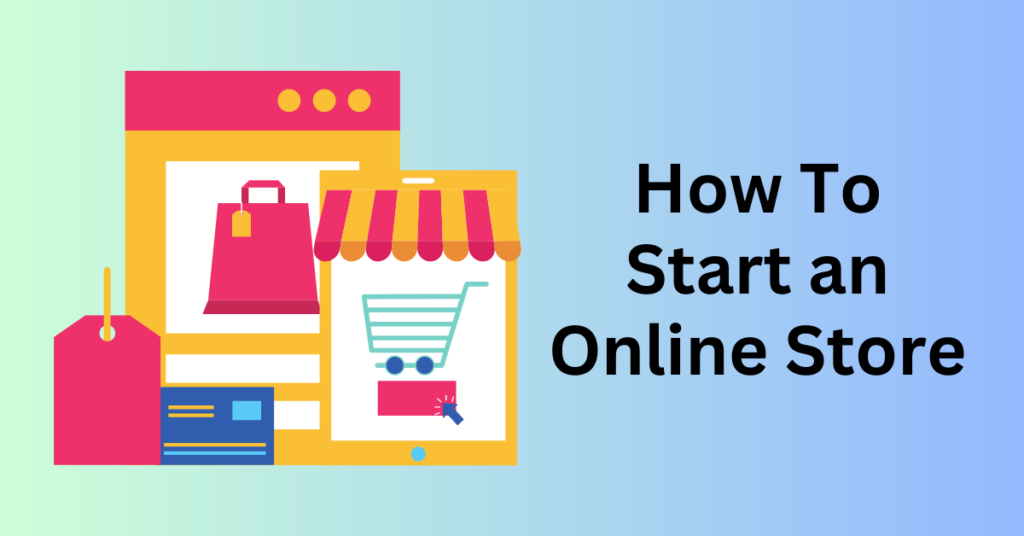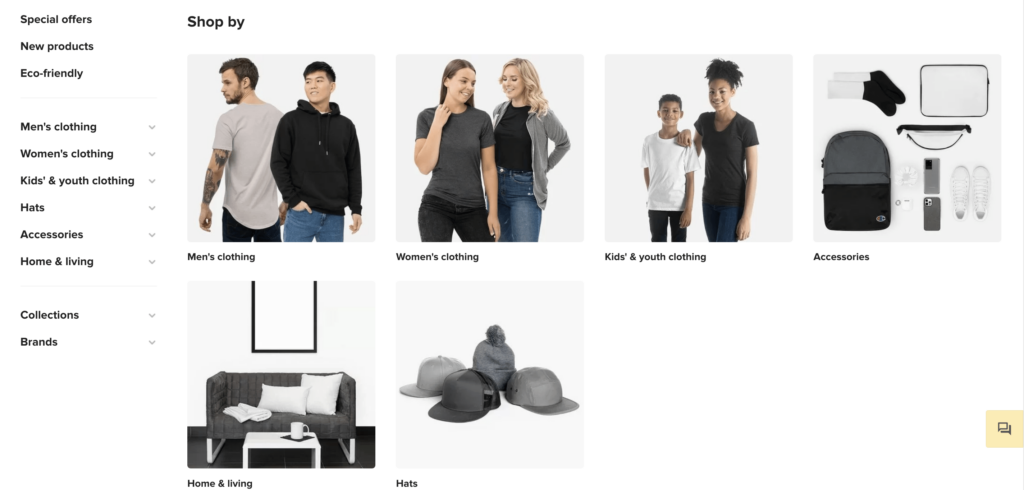One industry that has seen unprecedented growth and opportunity is online clothing sales. Whether you’re a seasoned entrepreneur looking to diversify your portfolio or a fashion enthusiast to sell clothes online has never been more promising.
In this comprehensive guide, we’ll navigate the dynamic terrain of e-commerce, unravelling the strategies and tactics that can turn your passion for fashion into a lucrative online business. As we step into 2024, the online marketplace is rife with possibilities, but success demands a strategic approach and a solid understanding of the latest trends and technologies.
From leveraging social media platforms and optimizing your online store for maximum visibility to understanding the intricacies of sustainable fashion that resonates with conscious consumers, we’ll cover it all. Whether you’re considering launching your own brand or utilizing existing platforms, we’ve got the insights you need to thrive in this competitive digital landscape.
Create Your Online Store Today
Is Selling Clothes Online Profitable?

Selling clothes online can be a highly profitable venture for entrepreneurs and businesses alike. One key factor contributing to online clothing sales’ profitability is the vast and accessible market. The Internet provides a global platform, allowing sellers to reach a diverse and extensive customer base.
With the ability to target specific demographics and niches, online clothing retailers can tailor their offerings to meet the demands of various consumer segments, increasing the likelihood of sales. Additionally, the convenience of online shopping appeals to modern consumers. It enables them to browse, select, and purchase clothing from the comfort of their homes, further driving the demand for online apparel businesses.
Moreover, the relatively low overhead costs associated with online clothing sales contribute to the profitability of this business model. Traditional brick-and-mortar stores often require significant investments in physical retail spaces, utilities, and personnel. However, online retailers can operate with reduced expenses.
Many online clothing businesses leverage print-on-demand and dropshipping models, eliminating the need for inventory storage and management. This cost efficiency allows sellers to allocate resources to marketing, quality products, and customer service, enhancing the overall customer experience and loyalty. This, in turn, contributes to sustained profitability.
However, success in the online clothing market also depends on effective marketing and brand building. With the saturation of the online marketplace, establishing a strong brand presence and marketing strategy is crucial for standing out among competitors. Building trust with customers through transparent policies, quality products, and excellent customer service is essential for long-term profitability in the competitive world of online clothing sales.
Create Your Online Store Today
Where to Sell Clothes Online

Selling clothes online has become increasingly popular due to the widespread use of the internet and the convenience it offers to both buyers and sellers. There are several avenues where you can successfully sell clothes online, ranging from e-commerce marketplaces to social media platforms, and even through dedicated e-commerce stores using platforms like Shopify and WooCommerce.
E-commerce Marketplaces – How to Sell Clothes Online
E-commerce marketplaces are online platforms that connect buyers and sellers, making them an excellent starting point for selling clothes. Platforms like Amazon, eBay, and Etsy have a vast user base and provide a ready-made infrastructure for sellers.
To get started, you’ll typically need to create a seller account, list your products, and follow the platform’s guidelines. These marketplaces offer a large customer base, built-in payment systems, and logistical support, making it easier for sellers to reach a broader audience.
However, a drawback of selling on a marketplace is the huge competition with other sellers on the marketplace. Also, the transaction or platform fee will cost you a lot.
Social Media Platforms – How to Sell Clothes Online
Utilizing social media platforms is another effective way to sell clothes online. Platforms like Instagram, Facebook, and Pinterest allow you to create a brand presence and engage with your target audience directly.
You can set up a business account and showcase your clothing products through posts and stories. Besides, you can even use features like Instagram Shopping to tag and sell products directly from your posts. Building a strong social media presence enables you to leverage visual content to promote your brand and drive traffic to your online store.
Dedicated E-commerce Stores – How to Sell Clothes Online
For a more customized and branded selling experience, consider setting up your own e-commerce store. Platforms like Shopify and WooCommerce are popular choices for creating and managing online stores.
- Shopify: Shopify is a user-friendly e-commerce platform that allows you to create a professional online store without extensive technical knowledge. It provides a range of customizable templates, secure payment gateways, and easy integration with various third-party apps. With Shopify, you have the flexibility to design your store according to your brand and manage everything from product listings to order fulfillment.
- WooCommerce: If you prefer to use WordPress, WooCommerce is a powerful plugin that seamlessly integrates with WordPress to turn your site into a fully functional e-commerce store. It offers a high level of customization, making it suitable for businesses of all sizes. You can choose from a variety of themes, add product listings, and manage your store’s functionality with ease.
The choice of where to sell clothes online depends on your business goals, target audience, and the level of control and customization you desire. E-commerce marketplaces, social media platforms, and dedicated e-commerce stores each offer unique advantages. Many sellers often opt for a combination of these channels to maximize their reach and sales opportunities.
Create Your Online Store Today
Steps to Start an Online Clothing Business Sell Clothes Online
The journey from concept to a successful online clothing business involves careful planning and strategic execution. We’ll walk you through the essential steps to set up your online clothing store.
Step 1: Market Research and Niche Identification to Sell Clothes Online

Before diving into the world of online retail, it’s crucial to conduct thorough market research to identify your target audience and niche. You need to understand your potential customers’ preferences, purchasing behaviour, and the competitive landscape to provide valuable insights.
Then, you need to choose a niche that aligns with your passion and has a demand in the market. This could be sustainable fashion, activewear, vintage clothing, or any other specific category. By carving out a unique space in the market, you increase your chances of attracting a dedicated customer base.
Additionally, research your competitors to analyze their strengths and weaknesses. You need to identify opportunities for differentiation and ways to offer a unique value proposition. A well-defined niche and a clear understanding of your target market will guide your product selection, branding, and marketing strategies, setting the foundation for a successful online clothing business.
Step 2: Create a Business Plan to Sell Clothes Online
With a solid understanding of your market and niche, the next step is to create a comprehensive business plan. First, you need to outline your business goals, target audience, revenue streams, and marketing strategies. Then, define your brand identity, including your brand story, values, and aesthetic. A well-thought-out business plan serves as a roadmap for your online clothing business. Besides, it can help you stay focused and make informed decisions.
Besides, you need to consider the logistical aspects of your business. This includes sourcing products, inventory management, and order fulfillment. In this stage, you need to decide whether you’ll manufacture your own clothing, collaborate with designers, print on demand, or use a dropshipping model.
With the business model in place, you can outline your budget clearly. This will include your startup costs, marketing expenses, and any ongoing operational costs. Having a detailed business plan not only helps secure funding if needed. In fact, it also provides clarity on the steps you need to take to achieve your business objectives.
Create Your Online Store Today
Step 3: Build Your Online Store

Now that you’ve identified your niche and crafted a solid business plan, it’s time to bring your vision to life by building your online store.
Firstly, you need to choose a reliable e-commerce platform that aligns with your business needs and technical expertise. Platforms like Shopify, WooCommerce, and BigCommerce offer user-friendly interfaces, customizable templates, and essential features for managing products, inventory, and customer orders. These platforms are designed to be easy to use by anyone without any technical skills or experience.
After selecting the platform you want, you can pick a theme and customize your store to reflect your brand’s personality. This can ensure a seamless and visually appealing shopping experience for your customers.
If you don’t know which platform to start with, you may consider using Shopify. Shopify is one of the easiest all-in-one eCommerce store builders. With the extensive eCommerce store builder function, you can have your online store built and launched in less than an hour.

One of the key criteria of a successful online store is simplicity. You must consider the importance of user navigation and mobile responsiveness, as many shoppers browse and make purchases using smartphones. Then, secure payment gateways are also important to build trust with your customers and provide multiple payment options.
Visuals are most important for an online store. So, invest some time in creating high-quality product images and detailed product descriptions to showcase your clothing line effectively. A well-designed and user-friendly online store lays the foundation for a positive customer experience, contributing to the success of your online clothing business.
Create Your Online Store Today
Step 4: Source or Create Your Products
Depending on your business model and niche, you’ll need to decide whether to source ready-made clothing from wholesalers, collaborate with independent designers, or manufacture your own line. If you opt for manufacturing, establish strong relationships with reliable suppliers to ensure the quality and consistency of your products. Consider factors such as materials, sizing, and production timelines.
For those choosing a dropshipping model, partner with reputable suppliers who can fulfill orders directly to your customers. This allows you to focus on marketing and customer engagement without the burden of managing inventory.

Another popular approach is the print-on-demand model. You are going to handle the design part. It doesn’t matter if you are designing yourself or hiring someone to design for you. Once your design is ready, you can then upload your design to the print-on-demand platform. Then, it will generate some mockups for your product. Only after someone buys the item from you, your print-on-demand supplier will go ahead to manufacture the final product and ship it out to your customers.
Start Print-On-Demand with Printify
Regardless of your approach, prioritize quality control to uphold your brand’s reputation and customer satisfaction. Building a strong and diverse product catalogue is essential for attracting a wide range of customers and keeping them engaged with your online store.
Create Your Online Store Today
Step 5: Develop a Strong Online Presence
In the competitive world of online retail, a strong online presence is crucial for attracting customers and building brand awareness. You can leverage social media platforms like Instagram, Facebook, and Pinterest to showcase your products through visually appealing content.
By creating a content calendar, you can maintain a consistent posting schedule. This is important for the platform to prioritize your posting and also engagement with your audience. To build relationships with your audiences, you can communicate with them through comments, direct messages, and social media advertising.
Invest time in search engine optimization (SEO) to improve the visibility of your online store in search engine results. Optimize product descriptions, meta tags, and images to increase the likelihood of your store appearing in relevant searches.

Finally, blogging about fashion trends, styling tips, and industry news not only enhances your website’s SEO but also positions your brand as an authority in the fashion space.
Step 6: Effective Customer Service
Building strong relationships with your customers is essential for the long-term success of your online clothing business. Implementing effective customer service strategies will help you establish trust, encourage repeat business, and generate positive reviews. You need to provide clear and accessible customer support channels, such as email, live chat, or a dedicated customer service phone line. Also, respond promptly to customer inquiries and address issues with professionalism and empathy.
Besides, always consider offering a hassle-free return and exchange policy to instill confidence in your customers. Positive customer experiences contribute to word-of-mouth marketing, and satisfied customers are more likely to become loyal advocates for your brand.
For instance, I would sometimes just proceed with a refund for customers who are looking for a return or exchange. The cost of dealing with it will be more than the refund. Not only that, this may increase their satisfaction too.
To build your store reputation, you can utilize customer feedback to continually improve your products and services, demonstrating a commitment to meeting and exceeding customer expectations.
Step 7: Set Up Fulfillment and Shipping Processes
Efficient fulfillment and shipping processes are crucial for delivering a positive customer experience. You need to choose a reliable shipping partner and clearly communicate shipping times and costs to your customers at the checkout. There are customers who might consider paying more to get the item fast. Hence, you might also consider offering multiple shipping options, including standard and expedited services, to cater to different customer preferences.

Stock management is important as you don’t want to run out of stock. Hence, you should integrate your online store with a robust inventory management system to track stock levels and prevent overselling. Also, streamlining your fulfillment process helps minimize errors and ensures orders are shipped promptly.
If you’re using a dropshipping model, work closely with your suppliers to maintain accurate inventory information and timely order fulfillment. Providing transparent and reliable shipping options will contribute to customer satisfaction and loyalty.
Create Your Online Store Today
Final thoughts: How to Sell Clothes Online and Make Money
As we draw the curtains on this guide, you are now armed with the knowledge and insights needed to carve your niche in the exciting realm of online clothing sales. Selling clothes online isn’t just about moving products. Instead, it’s about weaving a narrative, connecting with your audience, and creating an experience that transcends the transaction.
Now, go forth and unleash your creativity, passion, and entrepreneurial spirit. Whether you’re curating a sustainable fashion line, championing inclusivity, or embracing the latest trends, the online space is yours to conquer.
As you embark on this journey, don’t forget that making money is not just about transactions; it’s about creating value, building relationships, and leaving an indelible mark on the fashion landscape.





